How to Clean Plywood Floors: Effortless Cleaning
Are you tired of your plywood floors looking lackluster despite your efforts? Wondering if there’s a better way to restore their shine? Look no further! In this How to clean plywood floors guide, we’ll delve into the art of cleaning plywood floors.
It is for homeowners to maintain their investment. It is also for DIY enthusiasts eager to spruce up their space. You’ll find practical tips, insider tricks, and step-by-step instructions. They will leave your floors looking brand new.
By the end, you’ll have the confidence and know the best way to clean plywood floors like a pro. This will ensure your floors sparkle and last. Say goodbye to dull floors and hello to a fresh, vibrant living space!
Understanding Plywood Floors

Plywood floors are versatile and cheap. They work for both homes and businesses. Manufacturers bond many layers of wood veneer to make plywood. It is strong and durable. It also resists warping and shrinking. Various types of plywood floors are available. They include hardwood plywood, softwood plywood, and composite plywood.
Each type has unique traits and uses. Plywood floors come in different grades. The grades range from A to D. They reflect the floors’ quality and appearance. Despite their affordability, plywood floors are durable and easy to install and maintain. With proper care, they can last for many years.
This makes them a great choice for budget-conscious homeowners and contractors. Are you renovating or building a home? Knowing the benefits and qualities of plywood floors can help you make smart flooring choices.
Preparation Before Cleaning
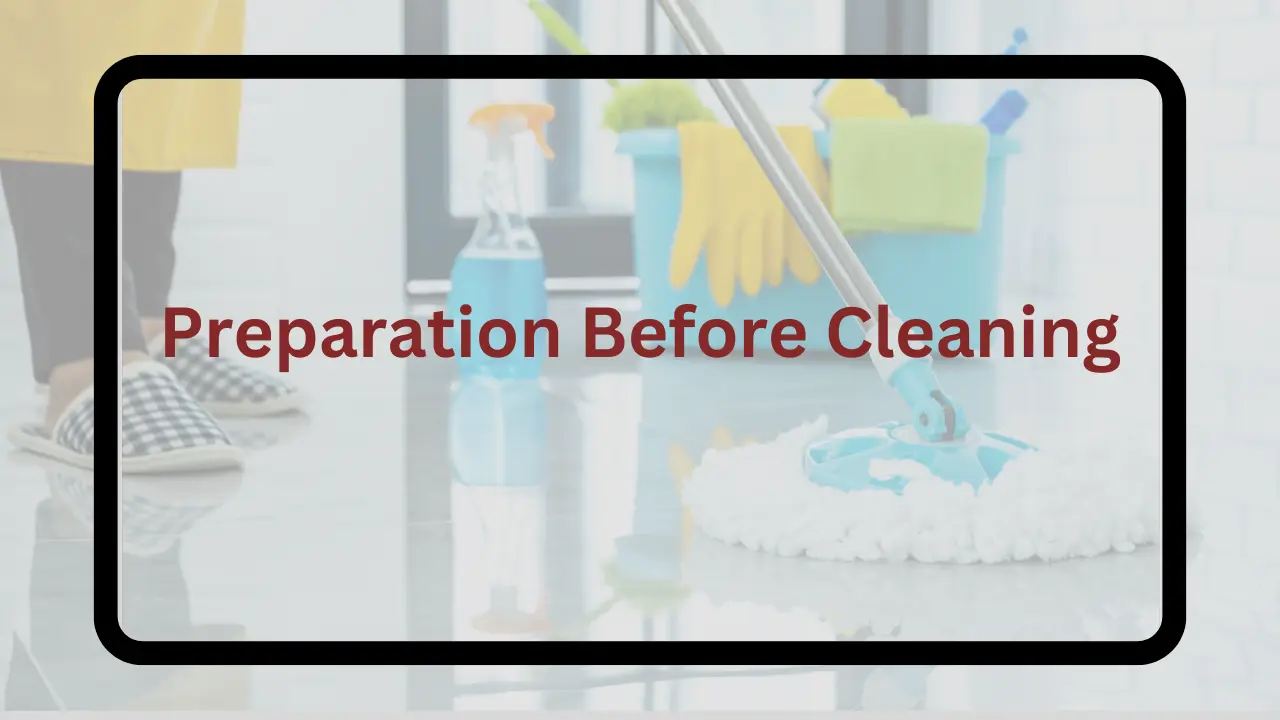
Before you start cleaning plywood floors, do some preparatory steps. They ensure the best results. Clear the area. Remove furniture and any other obstacles that may block cleaning. This allows easy access to the whole floor. It also prevents damage to furniture during cleaning.
Next, sweep or vacuum the plywood floor to remove loose dirt, dust, and debris. Pay close attention to corners, edges, and hard-to-reach areas. Dirt tends to accumulate there. First, remove surface debris. This will prevent scratching or spreading dirt while cleaning.
Also, inspect the floor for stubborn stains or spills. They may need special attention. Identifying and fixing these areas first can simplify the cleaning process. It will also make the results better. After you finish preparing, you are ready to clean your plywood floors.
Choosing the Right Cleaning Products

Choosing the right cleaning products is crucial. They keep plywood floors looking good and intact. Consider factors when choosing cleaning solutions. These include the finish on your plywood floors. They also include manufacturer recommendations and cleaning instructions.
Opt for mild, pH-neutral cleaners that are safe for use on wood surfaces. Avoid harsh chemicals and abrasive cleaners. They can damage the finish and strip the plywood’s protective layer.
For routine cleaning, a gentle floor cleaner diluted with water is often enough. Or, you can make your own cleaning solution. You can use household ingredients like vinegar and water. It is effective for removing dirt and grime without harming the wood.
It’s also crucial to test any new cleaning product in a small, hidden area of the floor. Do this before using it on the whole surface. This lets you ensure the plywood is compatible. It also helps you avoid bad reactions or damage.
Choose the right cleaning products. They clean your plywood floors and keep them beautiful. They also make the floors last longer.
Methods for Cleaning Plywood Floors
1. Sweeping or Vacuuming: sweep or vacuum the floor to remove dust, dirt, and debris. Use a soft-bristled broom. Or, use a vacuum with a soft brush. This will prevent scratches.
2. Damp Mopping: Use a damp mop to clean the floor. Avoid saturating the floor with water, as excessive moisture can damage the wood. Use a mild detergent diluted in water for mopping, and ensure the mop is damp, not soaking wet.
3. Vinegar Solution: A mixture of vinegar and water can best way to clean plywood floors. Mix equal parts of white vinegar and water in a bucket, dampen a mop in the solution, and mop the floor. Vinegar helps to remove dirt and grime without damaging the wood.
4. Commercial Wood Cleaners: There are wood floor cleaners. These products clean and maintain wooden floors. Follow the manufacturer’s instructions for dilution and application.
5. Avoid Harsh Chemicals: Avoid using harsh chemicals, bleach, or ammonia-based cleaners on plywood floors. They can strip the finish and harm the wood.
6. Spot Cleaning: For stubborn stains or spills, clean them right away. Use a soft cloth or sponge dampened with water or a mild cleaner. Avoid letting spills sit on the floor for an extended period as they can seep into the wood and cause damage.
7. Protective Mats and Rugs: Use rugs or mats in high-traffic areas. Place them under furniture. They protect the floor from scratches and wear.
8. Regular Maintenance: Keep the floor dry and wipe up any spills. Trim pets’ nails to prevent scratches on the floor surface.
9. Avoid Excessive Moisture: Moisture can damage plywood, so avoid exposing it to excessive amounts. Wipe up spills right away. Make sure to ventilate areas prone to moisture, like bathrooms and kitchens.
10. Recoating or Refinishing: Recoating or refinishing can restore a dull plywood floor. The finish may wear out. Doing this will also protect the wood. Ask a professional for guidance on the right products and methods. They are for recoating or refinishing plywood floors.
Related Article: How to Prevent Hardwood Floor Slipping: Effective Methods and Tips
Avoiding Damage While Cleaning
To prevent damage while cleaning your plywood floors, follow these Tips for maintaining plywood floors tips:
1. Use Gentle Cleaning Tools: Choose soft-bristled brooms, microfiber mops, or vacuums with soft brushes. They avoid scratching the surface of the plywood.
2. Avoid Excessive Moisture: Plywood is sensitive to water, so use little water when mopping. Wring out the mop to ensure it’s damp, not dripping wet. Also, wipe up any spills to prevent moisture from seeping into the wood.
3. Choose Mild Cleaning Solutions: Harsh chemicals can strip the finish and damage the wood. Stick to mild detergents or formulated wood floor cleaners. If using homemade solutions like vinegar and water, dilute them. This will avoid damaging the wood.
4. Test in a Small Area: Test it in a small area before using it on the whole floor. To protect the wood, hide the area to prevent any harm.
5. Avoid abrasive materials: Stay away from rough scrubbing pads or steel wool. They can scratch the plywood. Stick to soft cloths or sponges for spot cleaning.
6. Clean Spills Immediately: Clean up spills right away. This stops them from seeping into the wood and causing damage or staining.
7. Regular Maintenance: Install a regular cleaning schedule to prevent dirt and debris buildup. Sweeping or vacuuming daily can prevent scratches from abrasive particles on the floor.
8. Use protective measures: Put doormats at entry points. They trap dirt and stop it from tracking onto the floor. Also, consider using furniture pads or felt protectors. Put them under the legs of furniture to stop scratches and dents.
9. Be Mindful of Heavy Furniture: Lift it, don’t drag it. This will avoid scratching or denting the plywood.
10. Follow the Manufacturer’s Recommendations: If your plywood floor has a finish or treatment, follow the maker’s cleaning advice. Also, follow their maintenance advice. This will avoid voiding warranties or causing damage.
Related Article: Expert Hacks for How to Clean Old Linoleum!
Dealing with Stubborn Stains
Removing tough stains from plywood floors takes extra effort. But, you can do it without harming the wood. Here’s how:
1. Identify the Stain: Figure out the type of stain you’re dealing with (e.g., food, grease, ink, pet stains). Then, choose the right cleaning method.
2. Spot Test: Before using a cleaning solution, do a spot test. Do it in an unseen area to ensure it won’t harm or discolor the wood.
3. Use gentle cleaning solutions: Increase their strength if needed. For water-based stains, use a mixture of mild dish soap and warm water. For oil-based stains, try a grease-cutting dish detergent or a commercial degreaser.
4. Dampen a Cloth or Sponge: Dip it into the cleaning solution. Wring it out and dab or rub the stain. Avoid scrubbing, as this can damage the wood.
5. Patience and Persistence: Some stains may need many rounds of cleaning to lift. Be patient and keep at it. Repeat the cleaning as needed. Do this until the stain is gone or smaller.
6. Vinegar Solution: For ink or pet urine stains, use a mix of equal parts white vinegar and water. Vinegar can help break down the stain without damaging the wood. Apply the solution to the stain, let it sit for a few minutes, then blot with a clean cloth.
7. Baking Soda Paste: For tough stains and odors, make a paste using baking soda and water. Apply the paste to the stained area, let it sit for a few minutes, then scrub with a soft-bristled brush or cloth. Rinse with water and dry.
8. Commercial Stain Removers: If home cures don’t work, try a remover made for wood floors. Follow the manufacturer’s instructions and test in a small area first.
9.Sand and Refinish: In extreme cases, stains have penetrated. Cleaning alone is not enough. You may need to sand and refinish the area. A professional should do this to avoid damaging the plywood.
10. Prevention: To prevent future stains, wipe up spills right away. Use rugs or mats in high-traffic areas. Also, apply protective coatings or sealants to the plywood floor as needed.
Related Article: How to Stagger Laminate Flooring
Maintaining the Shine
Keeping plywood floors shiny is essential. It keeps them looking their best and makes them last longer. Here are some tips to help you maintain that shine:
1. Regular Cleaning: This prevents dirt buildup. Dirt can dull the floor’s shine. Sweep or vacuum the floor daily to remove dust and debris.
2. Damp Mopping: mop the floor with a damp mop to remove stubborn dirt and restore shine. Use a little detergent diluted in water. Ensure the mop is damp, not soaking. This avoids excess moisture that can harm the wood.
3. Vinegar Solution: mop the floor with a solution of equal parts white vinegar and water. Vinegar helps to dissolve dirt and grime while leaving a shiny finish on the plywood.
4. Avoid using harsh chemicals: These include ammonia-based cleaners and abrasive cleaning tools. They can strip the finish and dull the shine off the floor. Stick to gentle cleaning solutions and soft-bristled brushes or cloths.
5. Protective Coatings: Use a protective coating or sealant made for plywood floors. These coatings enhance shine and protect the wood from wear and tear. Follow the manufacturer’s instructions for application and reapplication as needed.
6. Polishing: polish the floor with a wood floor polish or wax to restore shine and protect the surface. Choose a polish formulated for plywood floors and follow the instructions for application.
7. Preventative Measures: Prevent scratches and wear on the floor. Place rugs or mats in high-traffic areas and under furniture. Put pads or felt under furniture legs. This stops scratching and denting.
8. Regular Maintenance: Do regular maintenance. Keep the floor dry. Wipe up spills to stop damage from moisture and staining. Trim pets’ nails to prevent scratches on the floor surface.
9. Recoating or Refinishing: If the shine of the plywood floor fades or the finish wears, you can recoat it or refinish it. This will restore its appearance and protect the wood. Ask a professional for guidance. They can help with the best products. They can also help with the best methods for recoating or refinishing plywood floors.
10. Professional Maintenance: Hire a professional floor maintenance service to clean and refinish the plywood floor. Do this in high-traffic areas or commercial settings. These are places where wear and tear are more significant.
Related Article: How Thick Is a Floorboard
Preventive Measures
Preventive measures are actions taken to cut the risk of harm or damage. These measures are proactive. They aim to prevent accidents, injuries, illnesses, or other harm. You can install them in many settings. These include healthcare, workplaces, public safety, and environmental protection. Some common preventive measures include:
1. Education and Training: Education and Training provide knowledge and skills. They allow people to spot risks and take action to stop them.
2. Safety Protocols: Safety Protocols are about setting and enforcing procedures and guidelines. They ensure safe practices in many activities or environments.
3. Regular Maintenance: You perform routine checks and maintenance on equipment, machinery, and infrastructure. The goal is to find and fix potential hazards or failures before they cause harm.
4. Personal Protective Equipment (PPE): Personal Protective Equipment (PPE) provides appropriate gear. This gear includes helmets, gloves, goggles, and masks. It protects individuals from workplace hazards or environmental dangers.
5. Hygiene Practices: Promoting good hygiene habits includes handwashing, sanitation, and proper waste disposal. These habits prevent the spread of infectious diseases.
6. Risk Assessment: Risk Assessment identifies possible risks and weaknesses in a system, process, or environment. It then takes steps to reduce or remove them.
7. Emergency Preparedness: Emergency Preparedness involves developing plans and procedures. They are for responding to fires, natural disasters, or medical crises.
8. Environmental Controls: Environmental Controls help cut exposure to pollutants, toxins, or hazards. They use measures like ventilation systems or containment barriers.
9. Regulatory Compliance: Compliance with regulations means following laws, rules, and standards. They cover safety, health, and the environment.
10. Continuous Improvement: Continuous Improvement means reviewing and updating preventive measures. We base this on feedback, data analysis, and lessons from past incidents or near misses.
These measures prevent accidents, injuries, and bad events. They promote safety, health, and well-being. Individuals and organizations can install them.
Related Article: How to Install Anti Slip Stair Treads: Never Slip Again
Common Mistakes to Avoid
Avoiding common mistakes is crucial for achieving success and preventing setbacks. Here are some common mistakes to steer clear of:
1. Ignoring Feedback: Ignoring Feedback leads to missed opportunities. It means failing to listen to feedback from customers, colleagues, or stakeholders.
2. Lack of Planning: Lack of planning causes problems. It leads to inefficiencies, missed deadlines, and poor decisions.
3. Overlooking Risks: Ignoring or underestimating risks leaves you vulnerable. It can lead to unexpected challenges.
4. Poor Communication: Communication breakdowns can lead to misunderstandings, conflicts, and decreased productivity. Clear and effective communication is essential for collaboration and teamwork.
5. Micromanaging: Micromanaging is hovering over employees and micromanaging their work. It can stifle creativity, demotivate staff, and hinder productivity. Trusting your team and delegating tasks is key.
6. Ignoring Technology Trends: Failing to adapt to new tech can make your business obsolete. It can happen in a changing market. Stay informed about emerging technologies relevant to your industry.
7. Neglecting Self-Care: Ignoring self-care leads to burnout. Overworking and neglecting your health causes it. This causes worse performance and decision-making. Focus on self-care to maintain balance and well-being.
8. Underestimating Competition: It can leave you blindsided by their actions and plans. Stay informed about your competition. Look for ways to stand out in the market.
9.Not Learning from Mistakes: Failing to learn from past mistakes leads to repeated errors. It also causes missed chances for growth. Embrace failures as learning experiences and use them to inform future decisions.
10.Losing Sight of Goals: Losing Sight of Goals: Distractions sidetrack us. They make us lose focus on our long-term goals. This can lead to aimless drifting and no progress. revisit your goals and stay aligned with your vision.
Avoid these mistakes. Practice mindful decision-making. Doing so will improve your effectiveness and help you achieve your goals. It will also cut setbacks.
DIY vs. Professional Cleaning
While DIY cleaning methods are suitable for routine maintenance, there are instances where professional cleaning may be necessary. Professional cleaners have access to specialized equipment and products that can achieve superior results, particularly for deep cleaning or restoring heavily soiled floors.
Related Article: Clean Prefinished Hardwood Floors Guide
Environmental Considerations
For environmentally conscious consumers, eco-friendly cleaning options are available that minimize the impact on the environment. Look for certified green cleaning products and consider environmentally friendly disposal methods for used cleaning solutions.
Safety Precautions
When cleaning plywood floors, prioritize safety by ensuring adequate ventilation in the area. Some cleaning products emit fumes that can be harmful if inhaled, so open windows or doors to allow fresh air circulation. Additionally, wear protective gear such as gloves and goggles when handling cleaning chemicals.
Conclusion
Maintaining clean plywood floors is crucial for their longevity and aesthetic appeal. Follow the steps in this how to clean plywood floors guide. They will keep your floors looking great and free from dirt, stains, and grime. Remember to sweep or vacuum. Then, mop with a gentle cleaner. Avoid harsh chemicals. They could damage the wood.
Also, cleaning spills and stains can stop them from becoming permanent floor marks. Take care of your plywood floors. They will beautify your home for years.
FAQs: How to clean plywood floors
- What is the best way to clean plywood floors? The easy methods for cleaning plywood floors is to dry mop regularly and damp mop as needed with a gentle cleaning solution.
- Can I use bleach on plywood floors? It’s not recommended to use bleach on plywood floors as it can damage the wood finish and cause discoloration.
- How often should I clean my plywood floors? Plywood floors should be cleaned regularly to prevent dirt buildup, with frequency depending on factors such as foot traffic and environmental conditions.
- Will steam cleaning damage plywood floors? Steam cleaning can damage plywood floors by exposing them to excessive moisture, leading to warping or delamination. It’s best to avoid steam cleaning and opt for safer alternatives.
- Are there any DIY solutions for removing scratches from plywood floors? Yes, there are DIY solutions for removing scratches from plywood floors, such as using wood filler or a mixture of vinegar and olive oil to disguise minor imperfections.
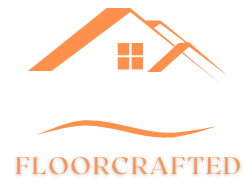
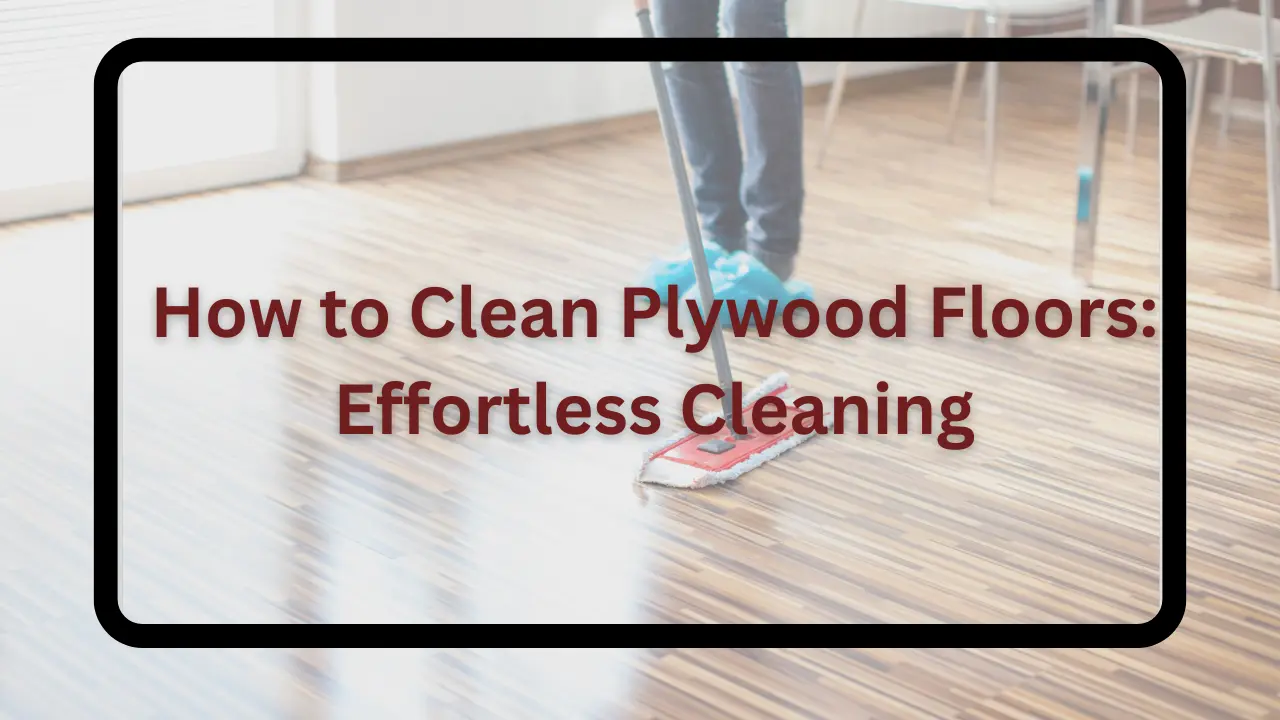
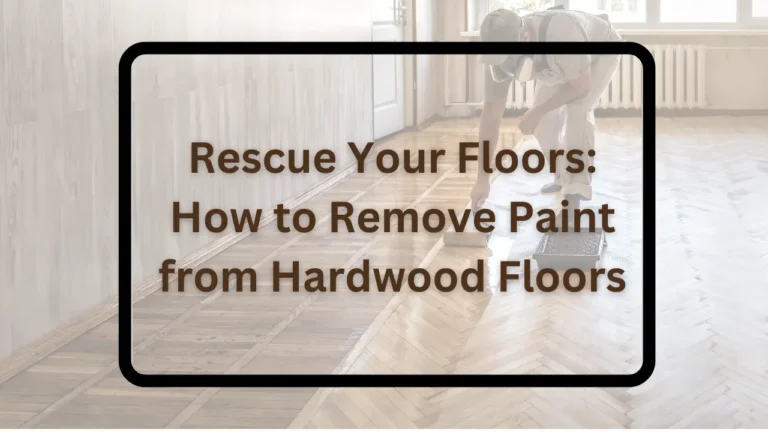
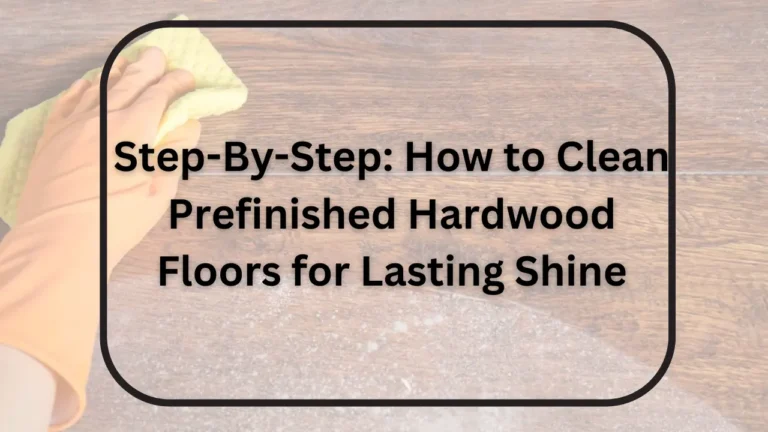
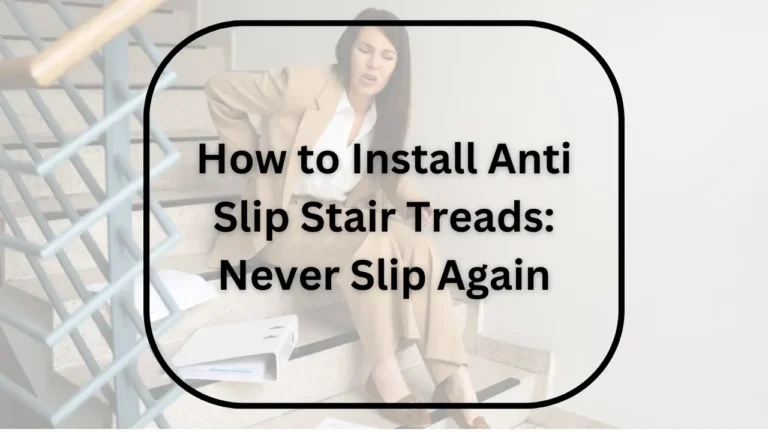
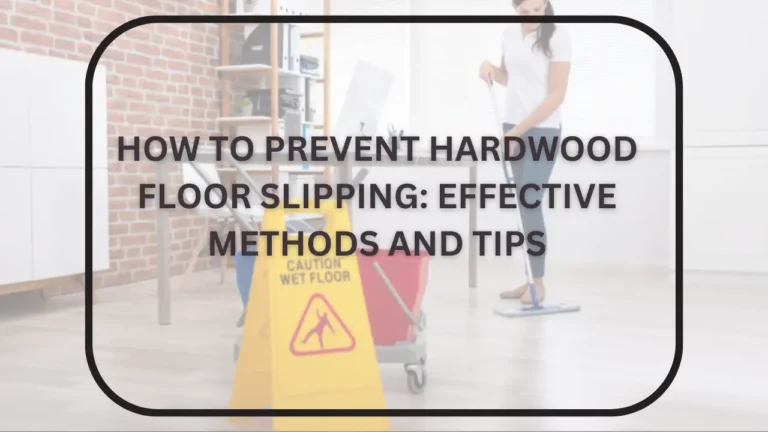
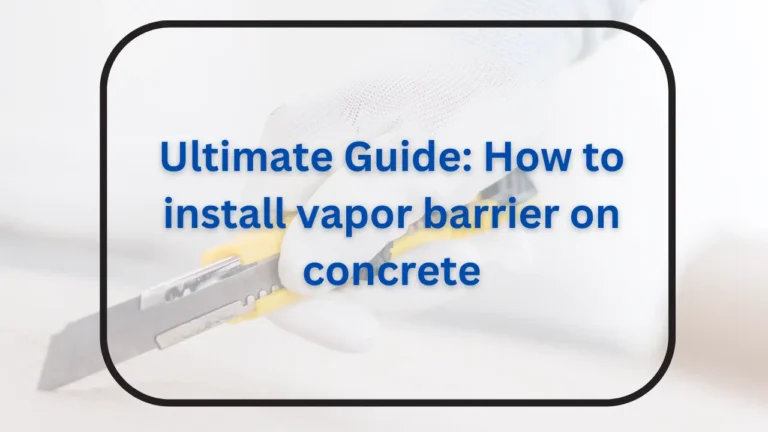
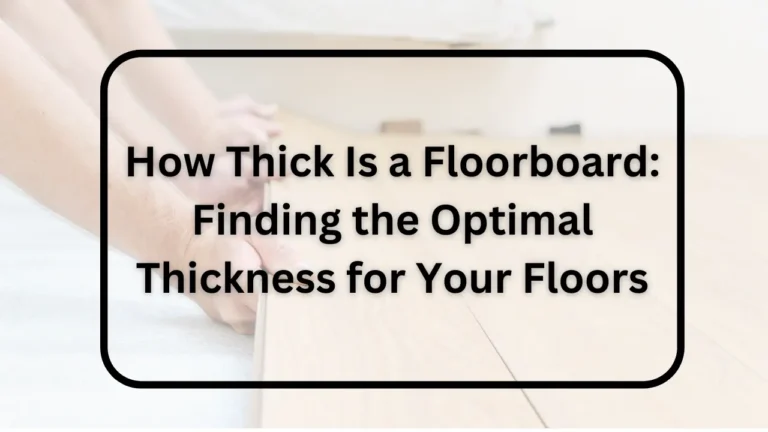
One Comment